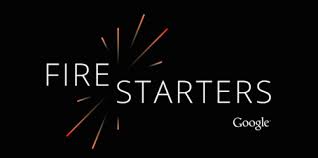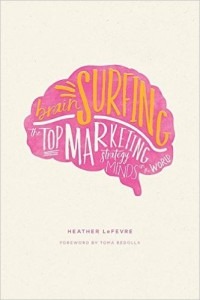I just had a fantastic week attending the 2nd edition of the European Planning Conference in Prague this week. I was able to arrive a couple of days early and enjoy walking around and soaking in the atmosphere of old Prague earlier this week. The morning I arrived was bright blue skies and cold crisp weather, perfect for wandering and appreciating the architecture. As it started clouding over in the afternoon, I settled in a coffee shop to get some work done, particularly to write my conference talk. I had a few notes and generally knew what I wanted to talk about, but hadn’t properly prepared the work and the presentation just yet.
I met Kristijan who organizes the EPC a couple of years ago while we both worked for Saatchi & Saatchi in Asia. He was based in Vietnam, and I was on a business trip to Ho Chi Minh City, talking to wealthy car enthusiasts for market research purposes. A colleagues told me to get in touch with Kris, who was nice enough to take some time to show me around and sit down for dinner and a few beers while we talked shop. We kept in touch after that, he was about to move back to Macedonia where he’s from and told me at the time that he had a few ideas about organizing an event for planners in Europe. It was brilliant to have that perspective, given I often think of the centre of Europe in London or maybe Paris, and forget about the whole of central and eastern Europe that I don’t know well at all.
I was happy Kris invited me to speak at the conference, it was an enriching and fun two day event, I met fantastic people from all over the old continent: France, Germany, Czech Republic, Slovakia, UK, Netherlands, Belgium, Switzerland, Sweden, Macedonia, etc. Kris told me the event was only one day long last year; he felt it was very rushed so he thought he’d try spreading it over two days this year. It was brilliant to also meet Jane (pronounced Y-a-nee or something I can’t actually write phonetically), Kris’ new business partner, they are in the process of creating a new agency, we talked about their new plans and I wish them the best in their new venture.
Tom Theys of FCB Global opened the conference with a talk he is testing and preparing for the upcoming Eurobest festival. I’m not going to give too many details before Eurobest, but it’s all about providing experiences and thinking ways to creative advertising and promotional pieces that will have an effect on changing people’s behaviours. This Nivea case study that I hadn’t seen is a great example of the kind of things he talked about:
Varia from Sid Lee in Amsterdam talked next, about the kind immersive and meaningful brand experiences they work on in the agency famously (at least partially) funded by Cirque du Soleil, who know a thing or two about creating memorable shows and experiences, like the Absolut Nights series of branded events for the famous vodka.
We ended the first morning with one of the two more academically inclined talks of the conference, Michael is working on a Phd, had recently interviews international diplomats to learn about their jobs, and studied the origins and principles of diplomacy. He told us of the lessons he drew from the world of international diplomacy and strategic planners could learn from it.
We had two energetic and brilliant talks in the afternoon from Achim Shauerte of BBH London and then Boris Nihom of Achtung! Amsterdam, both with interesting approaches and case studies from their respective agencies with slick, smart and fun presentations. Achim is really sharp, and Boris infectiously passionate. Boris shows us several interesting and practical case studies, like this stroller video. Before that Achim had told us of the process they went through at BBH to create this pretty bold (and possibly kind of disturbing) advert for Audi:
I’m adding these videos to illustrate a few case studies and ads, though they don’t do justice to the talks of course, there was more to it than that.
We all went for a nice dinner and beers to a nearby bar and restaurant in the evening to pursue geeky talks about advertising, marketing, branding, and more.
Friday Katharina started the day with a very interesting talk and an academic history lesson, as in the telling us of the principles of studying and learning history and the ways in which the discipline can be applied to develop foresight.
Robert who co-founded the idea crowd sourcing platform Future Bakery followed to tell us about his burgeoning nw business. He used to work for traditional advertising agencies in Prague for a long time before creative this new online platform a year ago. I wasn’t sure I understood what it was at first, and the more he told us about it, the more interested I was. It’s an online community – I guess à la Quora where he poses relatively simple questions to the audience of participants related to client briefs in order to crowdsource ideas and possible solutions to their business problems from a wide variety of locations and experiences. They’re not solutions or any replacement for the work of an agency or a creative professional, but they’re potentially ideas and perspectives you wouldn’t have considered otherwise. I was definitely left wanting to find out more about it.
It was a privilege to have Richard join us for a talk about whether it is more important for planners to be interesting or right. He lighted the room up with his enthusiastic energy and it was brilliant to have his perspective about planning and strategy today, as well as his comments on several pieces of great strategic work out of the APG awards case studies this year.
Tom and Richard both talked about the campaign to encourage women to practice sports in the UK from FCB, and, it’s worth checking out if you haven’t come across it:
Michail then told us of his original methodologies to create a compelling and original brand value proposition, including ways to cooperate with clients to create stronger value. It was very interesting and his models seem rich.
Finally, it was time for my talk closing the conference. I’d prepared a talk about what strategic planners can learn from tabletop games, one of my passions. I’ve actually recorded myself, hopefully I will be able to soon publish this as an episode to my podcast so in the meantime I’ll keep the details quiet.
I learned a lot and got time to meet and talk shop with amazing professionals in their fields. The European Planning Conference is really one of those where I’m not sure if I should just keep a secret because it was great to be with a relatively small committee and spend more time getting to know people properly as well as explore planning & strategy topics in depth, but at the same time it is a brilliant event and definitely deserves to have more European planners join for the conference next year! I hope I can go next year, I loved Prague and would happily go back. Look out for next year, I recommend it!



